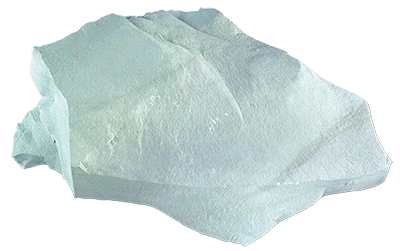What is Zeolite?
Zeolite – The power of nature for your gut. Discover why millions trust it.
Formation of Zeolite
Millions of years ago, volcanic eruptions occurred around the world. When the hot lava came into contact with seawater, it triggered a fascinating natural reaction. This interaction gave rise to a microporous rock with numerous fine gas inclusions: Zeolite. The name comes from Greek: “zeo” = to boil, “lithos” = stone – meaning: “boiled stone”.
Discovery and Significance of Zeolite
Zeolite is a naturally occurring volcanic mineral found in regions such as Greece, Siberia, Australia, the Americas, and more. Although it has existed in nature for a long time, it only recently gained interest in the field of medicine.
What makes zeolite so special:
Zeolite has the ability to bind harmful substances such as heavy metals and endogenous toxins, helping to relieve the body of these burdens.
As early as 1756, the Swedish mineralogist Axel A. F. Cronstedt discovered this natural mineral and named it “zeolite.” Since then, more than 60 different natural zeolite types have been identified – each with its own structure: crystalline, flaky, or layered.
Zeolite – a Versatile All-Rounder
Zeolite is used in many areas around the world:
- In agriculture, it improves soil quality; in industry, it’s used to produce lightweight concrete or paper. Its greatest strength lies in environmental protection – for example, in air purification (e.g. in catalytic converters) or water treatment.
- After environmental disasters like Chernobyl (1986) or Fukushima (2011), zeolite was specifically used because of its ability to bind toxins.
- Because of its versatility, zeolite is also synthetically produced today – with over 100 synthetic variants in use worldwide.
How does zeolite support detoxification?
Zeolite – specifically crystalline clinoptilolite – can selectively bind toxins such as ammonium, lead, and arsenic in the intestine.
Its special honeycomb structure with many pores and channels acts like a "biological vacuum cleaner": toxins are absorbed, while at the same time valuable minerals are released in exchange (ion exchange).
The result:
- ✔ Relief of the body from environmental toxins
- ✔ Supply of minerals and trace elements – safe and targeted
Can harmful aluminum be released from zeolite?
Whether aluminum is released from zeolite depends on its silicon content – the higher the silicon, the more stable the structure. PANACEO’s PMA zeolite contains a particularly high level of silicon, making it stable in the gastrointestinal tract.
📜 A clinical study confirms:
Even after three months of use, blood aluminum levels remained unchanged – a clear indication of its safety.
Zeolite, Bentonite and Healing Earth – A Comparison
🌋 Zeolite (Clinoptilolite):
- Crystalline framework structure
- Scientifically proven selective detoxification within the body
- Specifically binds toxins (e.g. heavy metals)
🪨 Bentonite:
- Layered structure (Montmorillonite)
- Absorbs fluid → stimulates digestion
- No clinically confirmed detox effect
🟤 Healing Earth:
- Derived from clay, loam or moor
- Rich in various minerals
- Releases minerals into the body
- Mode of action not yet clearly confirmed by science
Only zeolite has a clinically proven detoxifying effect – while bentonite and healing earth may support digestion or mineral intake.
The Long Journey to Certified Medical Device Status
Why is Zeolite Clinoptilolite not classified as a dietary supplement or pharmaceutical drug?
Because it is not metabolized but acts physically within the body – this is why it is classified as a medical device.
Certification & Safety
- Only CE-certified products are considered tested and safe.
- Manufacturing is subject to strict quality controls – comparable to those for medicines.
- The manufacturer must provide proof of therapeutic efficacy.
- Risks and side effects are regularly assessed (e.g., through market surveillance).
💡 What does this mean for you?
Only zeolite products with a CE mark & certification number should be used.
👉 Expert recommendation:
Look for a particle size of 1–10 micrometers – this ensures:
- maximum binding of toxins
- no nanoparticles present





